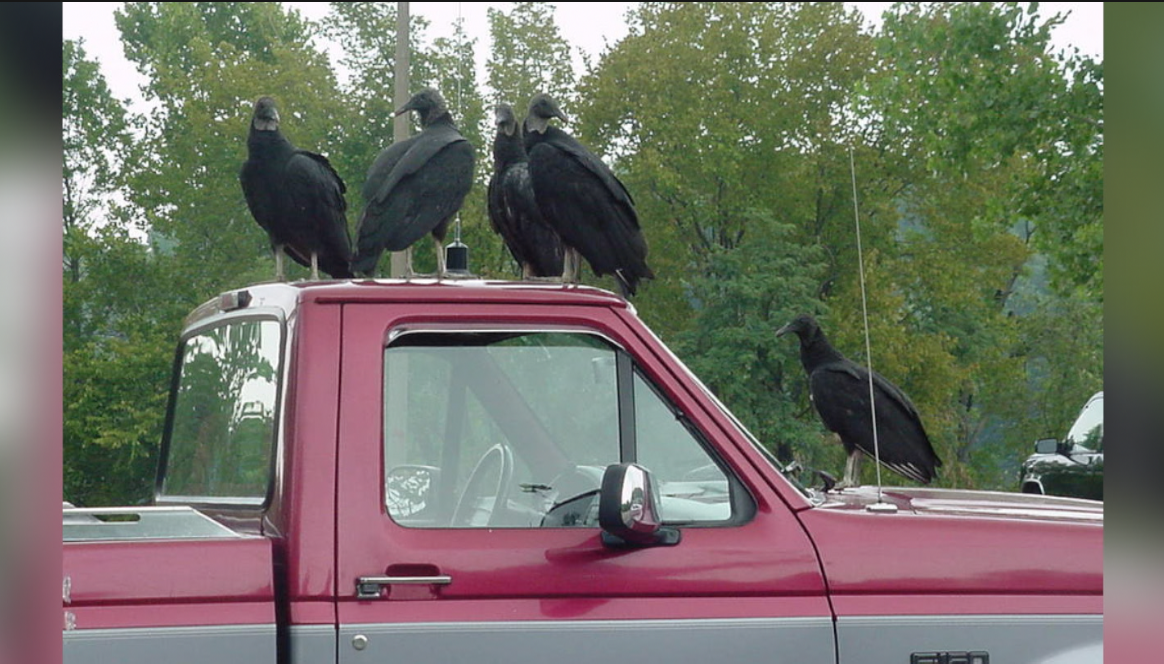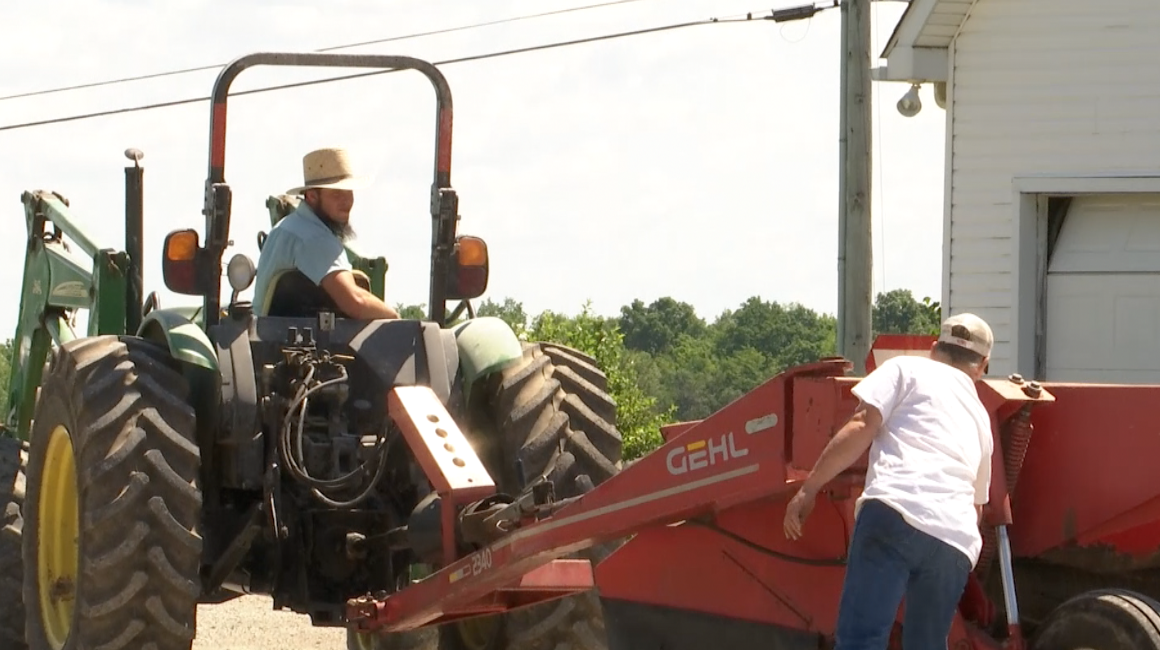LOUISVILLE, Ky. - Vultures are migratory birds protected by the Migratory Bird Treaty Act, State laws, and regulations. They are managed by the U.S. Fish and Wildlife Service and State wildlife agencies.
The birds, their nests, and eggs cannot be killed or destroyed without a Migratory Bird Depredation Permit. Individual States and localities may have further restrictions on vulture management.
Types of Vultures
Two different vulture species are native to North America: black vultures and turkey vultures. These scavengers play an important role in the ecosystem, feeding mostly on carrion, or already-dead animals.
Populations of both species have increased in abundance and range in the past 30 years and may continue to do so into the future. Vultures often form large roosts and loafing areas, numbering from a few dozen to hundreds of individual birds.

Conflicts With People
Property Damage. Large groups of vultures may roost or occupy woodlots near homes and can be destructive. Black vultures often damage homes and commercial buildings by tearing window caulking, roof shingles, vent seals rubber roof liners, and pool covers. They can damage vehicles by scratching paint, removing rubber seals and wipers, and ripping vinyl seat covers from boats and tractors.
Agricultural Damage. Both turkey and black vultures normally feed on animal carcasses. Black vultures, however, may also attack and kill calves, lambs, piglets, and other weak animals. This predatory behavior often results in serious injury to livestock, as vultures target the eyes and soft tissues. In most cases, affected domestic animals must be euthanized due to the extent of their injuries.

Help from USDA
Vulture management is complicated and site-specific, so consulting with wildlife professional is vital.
Sound-and-light-devices may be used to disperse the vultures, especially at the roost location as birds return to settle for the night.
A vulture effigy, hung correctly, will often scatter a roost.


